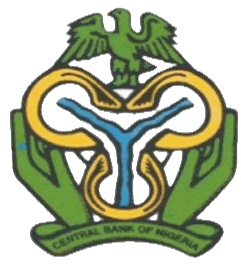Please use this identifier to cite or link to this item:
https://library.cbn.gov.ng:8443/jspui/handle/123456789/329Full metadata record
| DC Field | Value | Language |
|---|---|---|
| dc.contributor.author | Oresotu, F. O. | - |
| dc.date.accessioned | 2018-10-15T12:37:42Z | - |
| dc.date.available | 2018-10-15T12:37:42Z | - |
| dc.date.issued | 1993-09 | - |
| dc.identifier.citation | Oresotu, F. O. (1993).Implementation of indirect monetary control in Nigeria: problems and prospects. Economic and Financial Review, 31(3), 159–181. | en_US |
| dc.identifier.uri | http://library.cbn.gov.ng:8092/jspui/handle/123456789/329 | - |
| dc.description.abstract | The paper discusses the advantages and disadvantages, pre-conditions, instruments and issues in indirect approach to monetary and credit control. Among the preconditions stated are the ability of the Central Bank to formulate an appropriate monetary programme to which government must give support and co-operation to the Central Bank in its execution. The importance of competitive money and short-term securities markets to serve as medium for transmitting monetary policy action to the productive sectors of the economy is also stressed. This will facilitate the functioning of an efficient transmission mechanism for the allocation of financial resources among competing needs. The relevance of a machinery for the regular supply of up-to-date data on the operations of the financial institutions to permit the supervisory agencies and other operators to take timely decisions is also stressed. The principal instruments of the indirect approach to monetary control comprise mainly cash reserve requirement, the discount rate mechanism, and open market operations. Among the issues discussed on the market-based approach are problems of programme implementation, control of monetary aggregates and the international aspects. The modalities for the implementation of indirect approach to monetary and credit control in Nigeria are also discussed. Problems for immediate introduction of the new technique are listed as government fiscal deficit, financing and excess liquidity; harmonization of fiscal and monetary policies, insolvent banks, non-bank financial institutions, inadequate money market activities, weak banking supervision, inadequacy of regular and reliable statistical data as well as the need to train the CBN staff that will handle the introduction of the new technique. The efforts of the CBN in addressing these problems are listed in the paper. The prospects for the successful implementation of indirect approach to monetary management are presented as being inextricably connected with the ability of government to minimize fiscal deficit, reduce its dependence on the CBN, and co--ordinate monetary and fiscal policies. The monetary authorities should also be able to foster and sustain confidence in the financial system. Another imperative factor in the prospect for the new technique is discipline on the part of both government and banks. | en_US |
| dc.description.sponsorship | Central Bank of Nigeria | en_US |
| dc.language.iso | en | en_US |
| dc.publisher | Central Bank of Nigeria, Research Department. | en_US |
| dc.relation.ispartofseries | Vol. 31;No. 3 | - |
| dc.subject | Financial institution, | en_US |
| dc.subject | Monetary control, | en_US |
| dc.subject | Cash reserve requirement, | en_US |
| dc.subject | Discount rate mechanism, | en_US |
| dc.subject | Programme implementation. | en_US |
| dc.title | Implementation of indirect monetary control in Nigeria: problems and prospects. | en_US |
| dc.type | Article | en_US |
| Appears in Collections: | Economic and Financial Review | |
Files in This Item:
| File | Description | Size | Format | |
|---|---|---|---|---|
| Implementaion of indirect monetary control in nigeria problems and prospects.pdf | 602.5 kB | Adobe PDF |  View/Open |
Items in DSpace are protected by copyright, with all rights reserved, unless otherwise indicated.
Admin Tools
